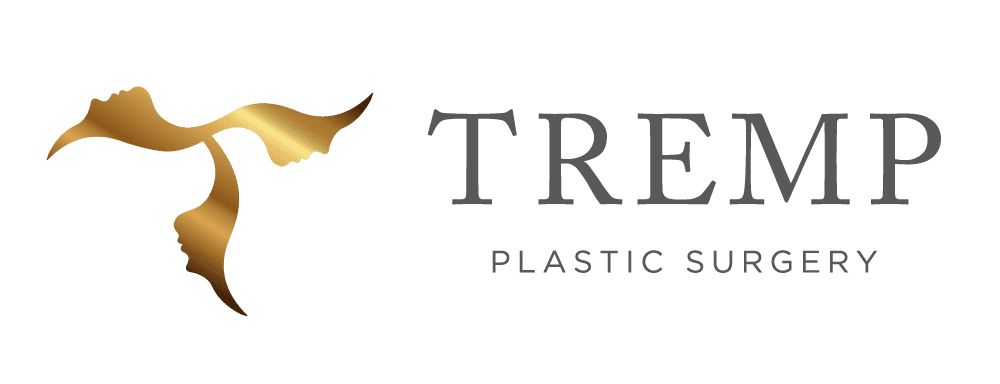- About
- Face & Skin
- Cellulite treatment
- Excessive sweating in women and men
- Facial and skin treatments
- Facial Surgery
- Hydrafacial treatment
- IV drips (vitamin infusions)
- Laser treatment
- Lip Lift
- Mesotherapy (skin structure )
- Special Offers by TREMP PLASTIC SURGERY
- Treatments with Skin Ceuticals
- Wrinkle and facial treatments with botulinum
- Wrinkle and facial treatments with filler
- Face
- Breast
- Body
- Offers
- Blog
- Contact
- EN
- DE
A nose operation (rhinoplasty) can be performed for cosmetic reasons or it can be functional, i.e. nasal breathing is impaired. The operation is one of the most difficult procedures in the field of aesthetic surgery and must be performed by an experienced surgeon. It is important to have realistic expectations of the patient within the framework of the existing anatomy and corresponding possibilities.


Motives for a nose operation?
The nose is not only an important sensory organ, but also more or less an eye-catcher in personal communication.
Cosmetic reasons for nose surgery are noses that are too large or too small, including narrowing, correction of a saddle or crooked nose, or narrowing of the nostrils.
Reasons for restoring the shape and function of the nose can be consequences after an accident or after unsuccessful previous operations.
What abnormality or deformity affects your nose?
Hump nose: The bridge of the nose forms a “hill”.
Saddle nose: The bridge of the nose is mostly sunken in the middle.
Wide nose: The nose is perceived as too wide for the face.
Crooked nose: The nasal septum and bridge of the nose are asymmetrical and the nose is slanted.
Bulbous nose: As a result of inflammation of the skin of the nose, it shows bulbous growths.
The most common reasons for a nose correction
– Reduce too big nose
– Shorten too long nose
– Build up too small nose
– Correct nose tip
– Correct nose wing
– Narrowing of nasal openings
– Removal of nasal humps
– Lifting of saddle nose
– Straightening of crooked nose
– Narrowing of bony nose
– Correction of nasal septum
– Correction of inner nasal structures for better respiratory function
– Profiloplasty of the face
– Accidental and broken noses
The goal after any nose surgery is a naturally shaped nose with improved nasal breathing.
Can the desired nose shape be determined yourself?
The correction of the nose profile is carefully planned during an individual consultation. Expectations are discussed in detail on the basis of photographs and 3D images. As far as technically feasible and if the expectations are realistic then the surgery can be recommended and performed. Of course, the desired shape of the nose must fit the shape of your face.
What do I have to consider before the operation?
If you are a regular nicotine user, you should completely stop using nicotine 4 weeks before and after surgery. If you have oily or oily skin, we recommend a Hydrafacial treatment with a gentle peeling 2-4 weeks before surgery to prepare for surgery and promote healing and decongestion. Hydrafacial treatment or radiofrequency microneedling is also recommended 4 weeks after surgery and promotes wound healing and decongestion with lymphatic drainage.
What is the procedure for the operation?
The operation takes place under general anaesthesia in inpatient conditions. For complex reconstructions of the nose shape, cartilage replacement is needed, either from the ear or from the rib. This is discussed in detail in advance during the consultation. To narrow the base of the nose or even to straighten a crooked nose, the bone must be broken and modelled. We use state-of-the-art technology for this, such as diamond drills or the Piezo instrument.
What are the surgical techniques?
Rhinoplasty through a closed approach:
In closed approach rhinoplasty, the correction is performed through the nostrils. The closed nose correction has the advantage that there are no visible scars. Especially minor corrections of the nose can usually be performed well with this method. This method is considered very gentle and is also called “Preservation Rhinoplasty” ( = preserving nose surgery). The recovery time is relatively short (7 – 10 days).
Rhinoplasty via an open approach:
In open approach rhinoplasty, an additional incision is made between the nostrils, over the columella. The open technique offers the surgeon a larger surgical field and can lead to a beautiful result in extensive corrections of the nose. The small scar on the columella is barely visible after a few weeks. The recovery time is longer than for nose correction via a closed approach (approx. 2 – 3 weeks).
What do I have to keep in mind after the operation?
For the first 72h after surgery you should elevate the upper body and apply ice without pressing on the cast. After 48h – 72h the nasal tamponades are removed, most patients can breathe well through the nose afterwards. When sleeping, the upper body should be slightly elevated for 7 days. For two weeks you should eat rather soft, cool food. Also try to avoid sneezing through your nose for two weeks. 2 weeks after surgery, you can start light physical activity. 3 weeks after surgery you should be able to go about your normal daily activities, physical exertion (heart rate > 100/minute) should now be possible. After the plaster removal, no pressure (no glasses) or force should be applied to the bridge of the nose for 4 weeks. The nose must then be moistened and cleaned regularly, and further decongestion is encouraged by nightly taping according to our instructions for an additional three weeks. You will also be instructed in manual lymphatic drainage. A series of treatments using Hydrafacial technology or radiofrequency microneedling may be performed 4 weeks after surgery to promote wound healing and decongestion. Sun exposure is possible 4 weeks after surgery under consistent sun protection SPF 50.
What are the risks of a nose operation?
Possible risks and complications are haematoma, wound healing disorders, sensory disturbances or scar problems. The sensory disturbances, especially of the tip of the nose, can last 12 – 18 months, sometimes the sensory disturbances remain. The risks are discussed in detail during a consultation.
The bruising can last about 5 – 10 days, the nasal swelling can last up to a year or even longer. We will give you appropriate decongestant medication and nasal drops and instruct you on regular massage or lymph drainage as soon as the wounds have healed.
Occasionally, there may be an irregularity in the bridge of the nose or a renewed deterioration of nasal breathing. Small irregularities can be corrected with hyaluronic acid treatments, sometimes surgical correction is necessary.
When will I be socially acceptable again rsp. when will I see the final result?
This varies from individual to individual, but at the earliest after a good week when the nasal cast and the stitches are removed. However, bruising or swelling may still be visible then. Complete healing takes 6 – 12 months, sometimes even longer. The results in the side profile can be seen immediately after the plaster is removed, from the front the nose still looks very swollen at the beginning. However, with time and continuous decongestion, an operated nose will appear more and more beautiful.
When can I do sports again?
After two weeks you can slowly start physical exertion, towards the end of the third week you can resume your normal daily routine.
What does a nose job cost?
The exact costs can only be determined during a consultation. Offer and prices.
Does health insurance pay for parts of the nose job?
If the operation is purely cosmetic, the costs are not covered by the health insurance. In the case of medically necessary nose operations, e.g. after an accident or in the case of significant nasal obstruction with recurring infections of the respiratory tract, the costs are partially covered by the accident insurance or health insurance. However, this requires a detailed medical clarification.

Do you have any questions about aesthetic facial surgery?
Contact us for a meeting.
July 19, 2024

